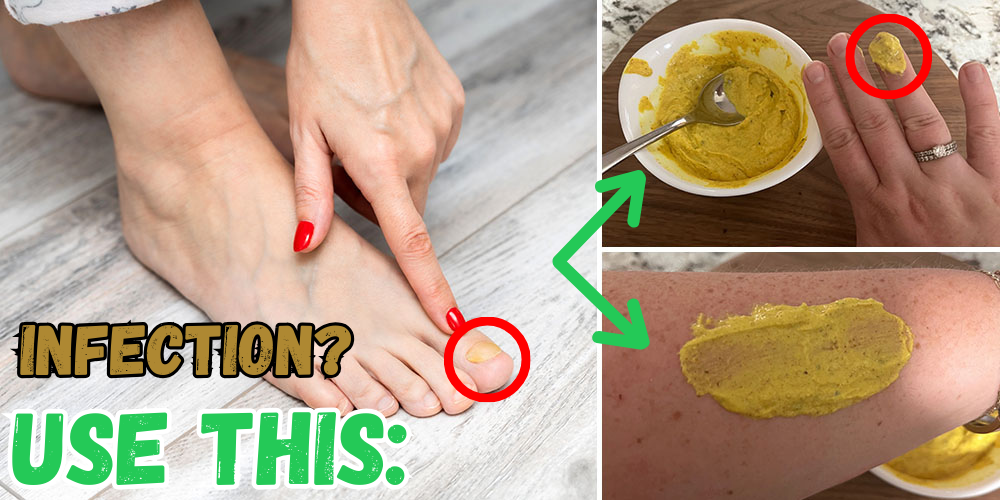
DIY Antifungal Poultice
If you have ever experienced a fungal infection before, whether it is athlete’s foot, toenail fungus or ringworm, you know that patience, persistence, and a good antifungal remedy is key to overcoming this uncomfortable issue. What’s worse is that fungi can even develop a resistance to common antifungal treatments over time, forcing those suffering from fungal infections to get creative to avoid prolonged discomfort
While there are store-bought antifungal solutions, you can use some simple ingredients in your own kitchen to fight stubborn fungi with a more holistic approach. Keep reading for a quick and easy way to make a DIY antifungal poultice.
About Fungal Infections
Fungal infections aren’t often openly discussed, but they are more common than you might expect. Fungal infections, called mycosis, are caused by either yeast or mold. Fungal infections are most common in our skin and nails, including our toenails, but they can occur in other areas of the body. Fungi are living organisms, but unlike animals or plants, they reproduce through spores. While there are likely millions of different types of fungi on the planet, there are only a handful that can cause fungal diseases or infections in humans.
Common Types of Fungal Infections or Diseases
While fungi can cause problems throughout the body, it most commonly affects superficial areas such as skin and nails. You can become more susceptible to fungal infections if your immune system has been weakened due to chronic illness or if you need to take immunosuppressants. Here are some of the most common superficial fungal diseases you might encounter:
Ringworm (Dermatophytosis)
Ringworm (Dermatophyte) is a mold-like fungus that can spread to humans through animals, other infected humans, or even soil. Ringworm thrives in warm, damp environments and is more common if you live in warmer climates or during the summer. It will cause an itchy, ring-shaped rash on the skin. This fungus lives off keratin, which can be found on the skin, scalp, and nails. These infections may start small and expand outward if left untreated. It can affect many areas of the body, including the scalp, the inner thighs and groin (tinea cruris/jock itch), nails (toenail fungus/tinea unguium), and feet (athlete’s foot/tinea pedis).
Onychomycosis (Nail fungus)
Onychomycosis is another fungal infection that affects the nails and skin and is most recognized for contributing to toenail fungus. It will typically start as a brown, yellow, or white spot beneath the nail, and then as the infection deepens, you might notice the nail thicken, separate from the nail bed, and crumble.
Candidiasis
Candidiasis is a fungal infection caused by a yeast called Candida albicans that naturally occurs on the body in small amounts. However, these fungi can cause unpleasant symptoms, from itching, burning, and redness to open sores. There are many different types of Candidiasis, depending on where it is located on the body, and it can affect the skin, scalp, throat, mouth, vagina, or in very severe cases, even the bloodstream.
There’s a guide about fungal infections which includes Candida Overgrowth and it’s symptoms. I learned that chronic fatigue, mood disorders, recurring urinary tract infections and brain fog can be symptoms of candida being present in your life. For me it was just the mood disorders that went away once I followed the Gentle Food Cleanse recommended on page 47. It truly worked, and the herbal remedies recommended in this book really did the job, and I didn’t have to pay a dime for any pills!
Natural Antifungal Remedies
One of the most frustrating hurdles with fungal infections is that fungi can often develop a resistance to over-the-counter antifungals, which leads many people, including scientists, to turn to natural remedies for relief. While you can help your body fight fungi by boosting your immune system with a healthy diet, topical remedies are ideal for providing localized relief to the area and stopping fungi at the source.
What is a Poultice?
A poultice, sometimes called a cataplasm, is a paste made from herbs and healing agents applied to the skin for topical herbal remedies. Poultices can be applied directly on your skin or spread on a warm cloth and applied to the skin for therapeutic benefits. Similar to a compress, poultices are intended to be left on the skin for extended periods of time to achieve the desired outcome.
Poultices have a history dating back centuries as an effective remedy to treat various ailments, including inflammation, insect bites, cysts, or abscesses. In recent years, poultices have emerged as a popular practice for reducing inflammation in equine athletes’ legs after an extensive workout due to their remarkable ability to draw heat from the muscles through evaporation.
How can a poultice help with a fungal infection?
With the right antifungal herbs, poultices can also serve as an effective topical treatment for fungal infections. Many of these herbs can be consumed to help prevent and combat fungal infections, but they work best when applied directly to the source to fight the presence of fungi on the skin.
Since the desired outcome for your antifungal poultice is to treat fungi at the surface, this paste works better when applied directly to the skin instead of spreading it on a cloth. This helps the antifungal compounds to interact with the fungus directly.
Disclaimer: Poultices are for external use only and should not be used on open wounds or internal fungal infections. Use them only to treat fungal infections on the skin and nails.
Antifungal Remedies for Your Poultice
Fortunately, many different types of herbs and natural ingredients alleviate symptoms and reduce the presence of fungi on the skin, nails, and scalp. Here are a few of the top contenders from your kitchen to provide you with relief:
Usnea (Old Man’s Beard)
Definitely, usnea is the first go-to remedy when it comes to fungal skin conditions. Usnic acid interferes with the energy production of fungal cells by inhibiting enzymes critical for their respiration and metabolism. This disrupts the fungi’s ability to grow and reproduce.
Besides its superior antifungal effect, Usnea Remedies have powerful antibiotic and antimicrobial properties. I’m using this Usnea Tincture Spray especially this time of the year both to avoid fungus and illnesses. I spray it on my skin wherever needed, and also on the back of my throat to prevent illness. Here’s more of what it can do for you!
Yogurt
Yogurt may not be the first ingredient that comes to mind when you think of fighting frustrating fungi, but it is likely one of the most effective. It contains good bacteria, including Lactobacillus and Bifidobacterium. Also known as probiotics, studies have shown that these healthy bacteria are particularly talented at inhibiting the growth of Candida albicans. It’s important to note that you should use plain yogurt rather than flavored yogurt, which can contain sugars or artificial sweeteners.
Turmeric
Turmeric has a long history of medicinal benefits, including anti-inflammatory, antioxidant, and antimicrobial. But it is also a powerful antifungal agent thanks to a compound called curcumin. This is another powerhouse herb that can help to reduce the growth of Candida Albicans and ringworm fungus on the skin and nails. Keep in mind that using turmeric topically can stain the skin and hair, leaving a yellow residue.
Cinnamon
A favorite natural fungicide for gardeners, cinnamon can also help to reduce the growth of fungi topically for humans and is effective at battling fungi that cause Candidiasis, Ringworm, and Nail fungi. Cinnamon is quite potent, and you can accomplish a lot with even just a pinch. If you find your mixture is too invigorating, feel free to cut back on the cinnamon or add additional yogurt to dilute your mix.
Cinnamon is great not just for external use. Using the right type of cinnamon two times a week can help you against brain fog and cognitive decline. Anyway, this is the shocking thing that cinnamon does to your brain.
Oregano
Oregano contains two compounds called carvacrol and thymol, which act as both an antimicrobial and antifungal. These two compounds work to dehydrate and kill several types of fungi and yeasts, including the persistent Candida fungus, and helps to prevent it from spreading further.
Coconut Oil
Lastly, virgin coconut oil is incredibly gentle on the skin and is a helpful topical ingredient for reducing the presence of fungi and treating conditions like Candidiasis or ringworm. It’s surprising that something so gentle on our skin might also be powerful at killing fungi, but studies have found virgin coconut oil can be just as effective as some antifungal medications such as Griseofulvin. It’s effective at treating both superficial fungal infections as well as relieving some common symptoms. Fractionated coconut oil is not the best choice, as it has no medicinal value.
When using coconut oil, make sure you avoid fractionated coconut oil. That’s because in it, the lauric acid, which has antimicrobial and anti-inflammatory properties is removed, along with other beneficial compounds. I never knew what to look for when in doubt regarding medicinal recommendations. Everything changed once I got certified as a herbalist and went through the best academy out there.
Everything I learned from this academy helped me avoid the side effects of lab-made pills and foods sprayed with chemicals and pesticides. Since I did it some time ago I’m not sure if there are many spots left now. Check it out here!
DIY Antifungal Poultice
With these common household ingredients, you can easily make your own DIY Antifungal Poultice to help treat superficial fungal infections on your skin, nails, and scalp.
Ingredients
Depending on the surface area of your fungal infection, you may want to adjust this recipe as needed. For example, if you have toenail fungus present on a single toe, you may want to reduce the recipe as needed to limit waste.
- Usnea Tincture

- 1/2 cup of Plain Yogurt
- 1/4 tsp of Cinnamon
- 1/2 tsp of Oregano
- 1 tsp of Turmeric
- 1-2 tsp of Coconut Oil
Step 1: Heating your herbs
Place the coconut oil, cinnamon, oregano, and turmeric in a small frying pan at medium heat and stir for 3-4 minutes until fragrant. Do not allow the spices or oil to burn.
Remove your herbs and oil from the heat and set aside for 10 to 15 minutes to cool. 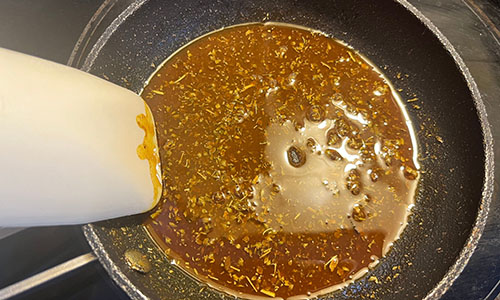
Step 2: Make your antifungal poultice paste
Next, mix your herbs with the yogurt using either a whisk or a spoon. 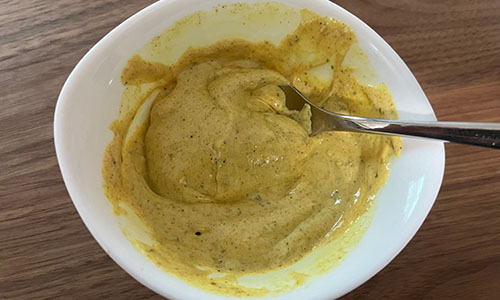
How to Use Your DIY Antifungal Poultice
Like all herbal remedies, allergies or sensitivities are possible and should be tested on the skin before use. 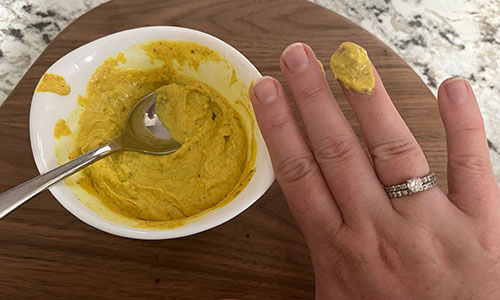
Step 3: Use the Usnea Tincture Spray on your skin and then apply your poultice paste
Apply a layer of your paste directly to the affected location and leave for up to half an hour.
After a half hour, thoroughly rinse the area and make sure that it is completely dry. Fungi prefer to live in damp, moist environments, so this step is crucial to effectively treating your fungal infection. 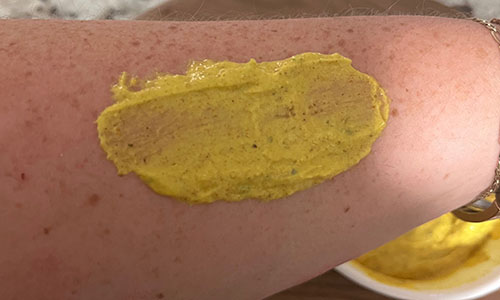
Repeat this recipe daily as needed to help reduce the presence of fungi on the skin.
Storing your Antifungal Poultice
Poultices have a short shelf life and should be prepared for each use, although if you made too much, you could store the leftovers in your fridge for use the next day.
Apple Cider Vinegar, Garlic, and Tea Tree Oil are other popular antifungals.
If you want to learn which common plants and aliments can be used as remedies (study-proven), treat yourself, and help others as well, check out this academy!
You will become a certified herbalist and you won’t waste your hard-earned money filling their pockets for pills and hard-to-pronounce chemicals.

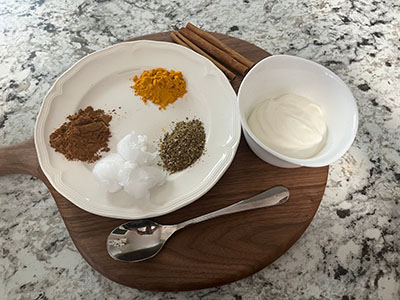
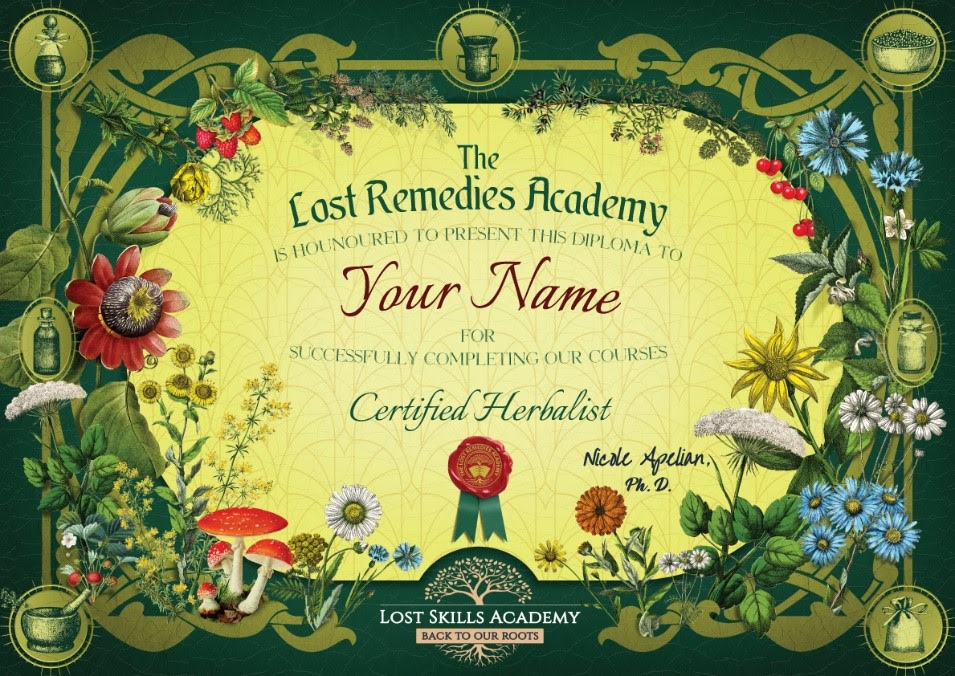
What do you recommend for sporotrichosis? I got it unknowingly from being pricked with a rose thorn on my foot and was in the hospital with sepsis for 5 days. After finally figuring it out (at least they think they did but blood tests and biopsies didn’t confirm) and taking me off of all the antibiotics they were trying unsuccessfully (and having three different allergic reactions to) they put me on a high dose antifungal and I got better. After 5 months, I’m finally off the medicine but I still have some nerve pain and skin issues. Is there something I can take/make that will help long term? I’m 56 and don’t take any other medicines and would prefer to heal my body naturally but had no choice to go to the hospital this time, unfortunately.
Hello, could you please let me know how long this remedy would take to work on a toenail fungus? Thank you
Why did my question disappear without an answer?
I had a toe nail fungus for a long time and the nail was thick and brittle. I tried a lot of stuff that didn’t work. Then one day it looked like it ight be more than just the fungus so I decided to try something that sounds crazy. I got a sleeve for my toe (something like a condom that holds medication to the toe). I put some some Listerine in the sleeve and put it on my toe and left it for a couple of days; the sleeve holding the Listerine in constant contact with the toe nail. And to my present surprise after I took off the sleeve it had killed the fungus under that nail… I am no doctor but it worked where other things had not….